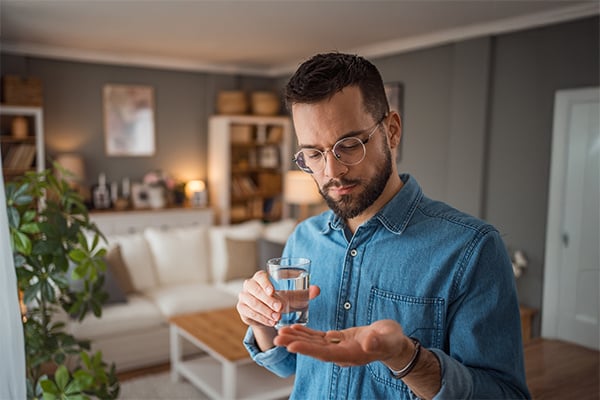Opioid safety
Opioids are a type of pain medication that includes oxycodone, morphine, tramadol and others. Using opioids to treat pain may come with risks, including addiction or overdose.

What are opioids?
Opioids, sometimes called opiates or narcotics, are a type of drug that help relieve moderate-to-severe pain when other treatments may not have worked. Ideally, opioids should only be used for a short time. Using opioids comes with serious risks, like overdose and addiction, and these risks increase the longer you use opioids.
Understanding the risks
Tolerance
You may feel like you need more and more of the medication to get the effect you used to get with a lower dose.
Physical dependence
Your body may come to depend on the medication so much that you feel ill when you don’t take it. As many as 1 in 4 people taking prescription opioids will struggle with addiction.
Accidental overdose
Taking too much of the medication can lead to overdose and even death.
Take your medicines as prescribed
- Know exactly how and when to take your medications.
- Take your meds on time. Use notes or a smartphone app.
- Have your medication with a small meal or snack to avoid side effects.
- You may need to take the medications for a long time.
- Talk to your doctor before stopping medications.
Fill your medications on time
- Set up automatic refills or refill reminders at your pharmacy,
- Consider using our mail order pharmacy to get a three month supply of medications mailed to your home. Contact Cornerstone Health Solutions at 844-319-7588 to get started.
Monitor your blood sugar levels
- Blood sugar testing shows how well your medications are working or how your food intake, exercise or illnesses are affecting your blood sugar levels.
- Check blood sugar levels using a blood glucose meter. Follow your doctor’s advice on how often you need to check your blood sugar level. Keep a record of your levels to discuss with them.
- If you take insulin, check your blood sugar before meals and snacks as well as before and after exercise.
Know your target blood sugar range
The American Diabetes Association recommends the following target blood sugar levels:
- Before meals: 80-130mg/dl
- Two hours after meals: Less than 180mg/dl
How to safely use opioids
- Take your medication exactly as prescribed. Make sure you understand the instructions.
- Fill all your prescriptions at one pharmacy location so the pharmacist can check the dosage and the safety of all your medications being taken together.
- Go to a single provider for all of your opioid prescriptions so they can check your doses, how your medications work together and how they affect you.
- Store opioids in a secure, locked location.
- Safely dispose of unused medication.
- Talk to your doctor about how you can manage your pain without opioids.
- Talk to your doctor before you stop taking your medication.
- Ask your doctor or pharmacist about getting naloxone (Narcan) which can be used to treat an opioid overdose. Naloxone is covered by all WellSense plans.
What not to do when taking opioids
- Don't take more medication than the doctor prescribed. Taking too much of an opioid, even when it’s prescribed to you, can be dangerous and even lead to death.
- Don't drink alcohol while taking opioids.
- Don't combine opioids with drugs like benzodiazepines (like Xanax or Valium), hypnotics (like Ambien or Lunesta), muscle relaxers (like Flexeril or Soma), or other opioids unless your doctor tells you to.
- Don't use another person’s prescription opioids.
- Don't share your medications with others.
Opioid overdose is an epidemic in the U.S.
Signs and symptoms of an opioid overdose
Overdoses can look different, but there are common signs and symptoms to watch out for:
- Extreme sleepiness or loss of consciousness
- Slow and shallow breathing or no breathing at all
- A slow heartbeat
- Very small pupils
- Pale, blue, or cold skin
What to do if you think someone is overdosing
- Call 911 right away
- Administer naloxone (Narcan)
- Try to keep them awake & breathing
- Lay them on their side to prevent choking
- Stay with them until help arrives
Helpful resources
You are leaving the WellSense website
You are now leaving the WellSense website, and are being connected to a third party web site. Please note that WellSense is not responsible for the information, content or product(s) found on third party web sites.
By accessing the noted link you will be leaving our website and entering a website hosted by another party. Please be advised that you will no longer be subject to, or under the protection of, our privacy and security policies. We encourage you to read and evaluate the privacy and security policies of the site you are entering, which may be different than ours.
